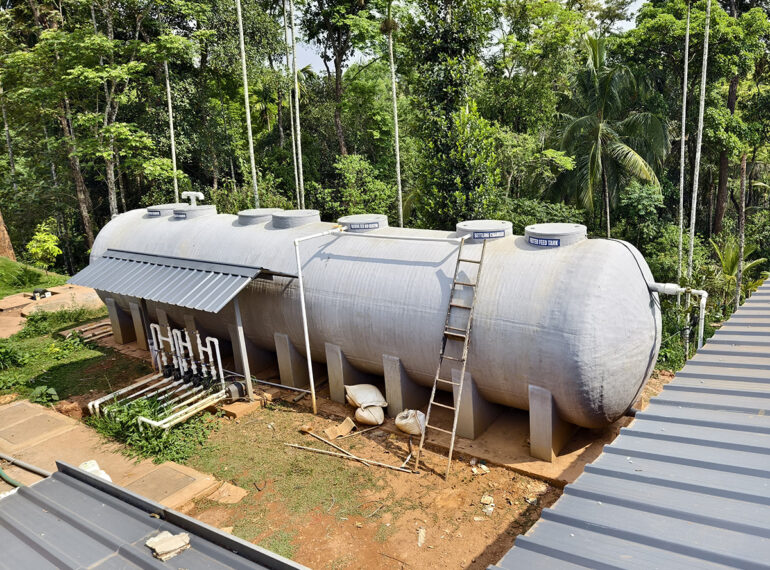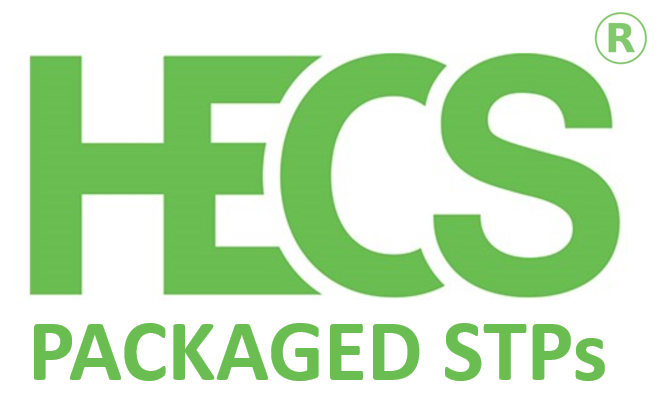Goa State Pollution Control Board's STP Guidelines - Compliance, Design & Best Practices
The Goa State Pollution Control Board STP Guidelines play a vital role in maintaining environmental sustainability, especially in Goa’s ecologically sensitive regions. Established under the Goa State Pollution Control Board (GSPCB), which was formed in 1988 under the Water (Prevention and Control of Pollution) Act, 1974, these guidelines ensure effective sewage treatment to protect water bodies, groundwater, and marine ecosystems from contamination. The GSPCB operates under the directives of the Central Pollution Control Board (CPCB), which was established in 1974 as the national authority overseeing pollution control across India.
Goa, known for its pristine beaches, rivers, and biodiversity, faces increasing challenges due to rapid urbanization and tourism. Untreated sewage discharge can severely impact the state’s fragile coastal environment, making STP regulations crucial. The Goa State Pollution Control Board STP Guidelines align with national environmental standards, ensuring that sewage treatment plants (STPs) in residential, commercial, and industrial sectors adhere to strict norms for wastewater management.
This comprehensive guide will help stakeholders understand the latest STP installation, operation, monitoring, and compliance requirements. By following these norms, businesses, real estate developers, and municipal bodies can contribute to a cleaner, healthier Goa while avoiding legal penalties and environmental damage.

1. Goa State Pollution Control Board STP Guidelines for Installation and Design
Capacity Assessment
According to the Goa State Pollution Control Board STP Guidelines, STPs must be designed based on the projected volume of sewage generated from residential, commercial, and industrial sources. The plant’s capacity should be sufficient to handle peak loads while ensuring efficient treatment. Proper assessment helps prevent overloading and ensures long-term sustainability.
Treatment Technology
The Goa State Pollution Control Board STP Guidelines recommend the adoption of advanced treatment technologies for efficient sewage processing. Some of the widely used technologies include:
- Sequential Batch Reactors (SBR): Highly effective for biological treatment and nutrient removal.
- Moving Bed Biofilm Reactor (MBBR): Offers high efficiency with low operational complexity.
- Membrane Bioreactor (MBR): Ensures superior effluent quality suitable for reuse.
- Extended Aeration Process: Ideal for small-scale treatment plants with moderate load variations.
Infrastructure Specifications
An STP should be equipped with essential components to facilitate efficient sewage treatment as per the Goa Pollution Control Board STP Norms. These include:
- Screening chambers to remove large debris.
- Oil and grease traps to capture fats and oils from wastewater.
- Aeration tanks for biological degradation of organic matter.
- Clarifiers and settling tanks separate sludge from treated water.
- Disinfection units (such as chlorination or UV treatment) to eliminate harmful pathogens before discharge.
2. Goa State Pollution Control Board STP Guidelines for Operational Standards
Effluent Quality Parameters
Before being discharged into the environment or reused, treated sewage must meet strict effluent quality standards set by the Goa State Pollution Control Board STP Guidelines. The key parameters include:
- pH Level: 5.5 to 9.0
- Total Suspended Solids (TSS): Not exceeding 20 mg/l
- Biochemical Oxygen Demand (BOD): Not exceeding 10 mg/l
- Chemical Oxygen Demand (COD): Not exceeding 50 mg/l
- Oil and Grease: Not exceeding 10 mg/l
- Ammoniacal Nitrogen: Not exceeding 5 mg/l
- Fecal Coliform: Less than 100 MPN/100 ml
These parameters ensure that treated wastewater does not harm aquatic ecosystems or pose health risks to humans and animals. Strict compliance with the Goa Pollution Control Board STP Regulations is necessary for any entity operating an STP in Goa.
Monitoring and Maintenance
Regular monitoring is mandatory under the Goa State Pollution Control Board STP Guidelines to ensure that the STP functions efficiently. Operators must:
- Conduct monthly effluent quality testing as per GSPCB norms.
- Maintain daily logs of treated sewage volumes and quality parameters.
- Perform routine maintenance of aerators, pumps, and disinfection units.
- Adopt automatic monitoring systems to track real-time data on STP performance.
STP failures can lead to environmental pollution and legal penalties, making proactive monitoring essential.
3. Sludge Management
Handling and Disposal
Sludge is an inevitable byproduct of sewage treatment and must be managed carefully to prevent environmental hazards. The Goa State Pollution Control Board STP Guidelines specify the following methods for sludge disposal:
- Composting: Conversion of sludge into organic manure for agricultural use.
- Dewatering and drying: Mechanical and natural methods to reduce moisture before disposal.
- Disposal at designated landfill sites approved by the Pollution Control Board.
- Incineration: Only for highly contaminated sludge where safe disposal is required.
Operators must ensure that sludge disposal methods comply with the Solid Waste Management Rules and GSPCB norms.
4. Compliance and Reporting
Regulatory Adherence
STP operators in Goa must adhere to all applicable environmental laws, including the GSPCB norms:
- Water (Prevention and Control of Pollution) Act, 1974
- Environment Protection Act, 1986
- Coastal Regulation Zone (CRZ) norms for sewage discharge near coastal areas
- Goa RERA Guidelines for residential and commercial projects requiring STPs
Non-compliance can result in legal action, fines, and even the closure of operations.
Documentation and Reporting
To ensure transparency and accountability, STP operators must maintain comprehensive records as per the Goa Pollution Control Board STP standards:
- Daily and monthly effluent quality reports.
- STP operational logs, including maintenance schedules.
- Sludge management and disposal records.
- Annual Environmental Compliance Reports submitted to GSPCB.
These records facilitate compliance verification and aid in performance improvement.
5. GSPCB norms for Reuse and Sustainable Practices
Recycling Treated Water
Goa’s water conservation efforts encourage the reuse of treated sewage as outlined in the Goa State Pollution Control Board STP Guidelines:
- Landscaping and gardening
- Flushing in toilets (dual plumbing systems)
- Cooling tower makeup in industries
- Groundwater recharge (where permitted)
Using treated water reduces freshwater demand and promotes sustainability.
Energy-Efficient STP Operations
To enhance sustainability, STPs should adopt practices recommended in the Goa Pollution Control Board STP norms:
- Solar-powered aerators to reduce electricity consumption.
- Automation and IoT-based monitoring for optimized efficiency.
- Green infrastructure, such as constructed wetlands, for natural wastewater treatment.
Ensure Compliance with HECS STP Solutions
Ensure your Sewage Treatment Plant meets Goa Pollution Control Board regulations with HECS. Our advanced STP solutions are designed for efficiency, compliance, and environmental safety. From expert design to regular monitoring and sludge management, we help you maintain water quality and prevent pollution. Partner with HECS for reliable wastewater treatment that supports sustainability, regulatory compliance, and public health in Goa. Contact us today for a customized STP solution!
Frequently Asked Questions
The Goa PCB mandates that all Sewage Treatment Plants (STPs) meet specific effluent quality standards, follow proper design and operation norms, and undergo regular monitoring to prevent water pollution. Key guidelines include:
- BOD (Biochemical Oxygen Demand): ≤10 mg/L
- COD (Chemical Oxygen Demand): ≤50 mg/L
- TSS (Total Suspended Solids): ≤10 mg/L
- pH range: 6.5 – 9.0
- Disinfection: Chlorination or UV treatment
The Goa PCB sets strict discharge limits to ensure treated sewage is safe for reuse or disposal. The key parameters include:
- BOD: ≤10 mg/L
- TSS: ≤10 mg/L
- COD: ≤50 mg/L
- Oil & Grease: ≤2 mg/L
- Faecal Coliform: <1000 MPN/100ml
STPs discharging into water bodies must meet more stringent norms. It is advised to install tertiary treatment for safe water reuse.
To get Goa PCB approval for an STP, follow these steps:
- Apply with a detailed STP design report.
- Provide effluent treatment plans and expected discharge quality.
- Get an Environmental Clearance (EC) if applicable.
- Install a flow meter and online monitoring system for real-time tracking.
- Undergo an inspection by the PCB and obtain the Consent to Establish (CTE).
- After commissioning, apply for Consent to Operate (CTO).
Failure to comply with Goa PCB STP regulations can lead to:
- Fines starting from ₹50,000 to several lakhs, depending on the violation.
- Legal action under the Water (Prevention and Control of Pollution) Act, 1974.
- Operational suspension or closure of the facility.
- Environmental compensation charges for excessive pollution discharge.
To ensure efficient STP operation and regulatory compliance, follow these best practices:
✅ Install a well-designed STP with primary, secondary, and tertiary treatment.
✅ Monitor effluent quality regularly to meet PCB standards.
✅ Maintain proper sludge management to prevent overflow and pollution.
✅ Use automation and online sensors for real-time monitoring.
✅ Conduct regular inspections and submit compliance reports to Goa PCB.
A well-maintained STP not only ensures compliance but also reduces costs and improves environmental sustainability.
Trusted By Industry Leaders
Client 1


Client 2


Client 3


Client 4


Client 5


Client 6


Client 7


Client 8


